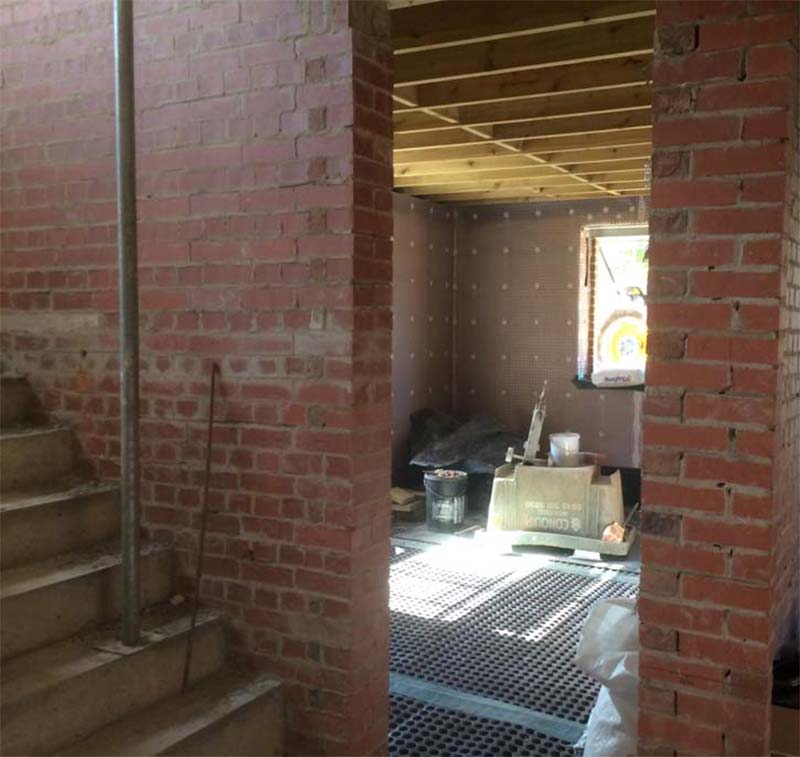
Choosing The Best Basement Waterproofing Methods
A wet basement can be a real problem. Whether it’s damp or flooded it can cause serious damage to your home and your health. Weak foundations and a build-up of respiratory-affecting mould can hurt your wallet and your lungs. So, it’s safe to say that you would want to waterproof your basement, but what are the best waterproofing methods? This article goes deep into some practical and proven techniques that will keep your basement dry.
1. Interior Waterproofing Solutions
When you’re dealing with water inside the basement, you want to stop it before it causes more damage. Here’s what works best for interior solutions:
Interior Sealants
Interior waterproofing sealants are the first line of defence. Applying waterproof coatings or silicone-based sealants on basement walls and floors can block water from seeping through cracks in your foundation. These products bond with concrete and create a barrier, keeping moisture out.
- Best for: Minor moisture issues
- Pros: Easy to apply, inexpensive
- Cons: Temporary solution, doesn’t address water from outside sources
Interior Drainage System
One of the most effective methods for dealing with basement flooding is an interior drainage system. This involves installing a French drain or drain tile beneath the floor along the perimeter of the basement. Water is collected in the drain and pumped out using a sump pump.
- Best for: Active water leakage
- Pros: Permanent solution, protects foundation
- Cons: Installation can be costly, requires a pump
Sump Pump Installation
A sump pump is an essential part of most interior drainage systems. If water collects in your basement, the sump pump moves it out through a discharge pipe, away from the home. These pumps come with battery backup options to ensure they keep running even during a power outage.
- Best for: Areas prone to flooding
- Pros: Highly effective at preventing water build-up
- Cons: Requires regular maintenance, relies on electricity
2. Exterior Basement Waterproofing Methods
Exterior solutions are all about stopping water from getting into your basement in the first place. These tend to be more expensive and labour-intensive, but they’re the most effective long-term solutions.
Exterior Foundation Waterproofing
This is one of the most thorough and effective ways to keep your basement dry. It involves excavating around the foundation, applying a waterproof membrane (such as a bituminous waterproof coating) directly to the foundation walls, and adding a layer of drainage board. The idea is to prevent water from penetrating the foundation at all. It may be the most effective waterproofing technique, but it is the most costly and disruptive, so should only be executed when required.
- Best for: Severe water problems, high water table areas
- Pros: Long-lasting protection, highly effective
- Cons: Expensive, requires excavation
French Drains (Exterior Version)
An exterior French drain is similar to an interior basement waterproofing system, but it’s installed around the outside perimeter of your home. It involves digging a trench around the foundation, installing a perforated pipe, and covering it with gravel. This system helps divert water away before it reaches the foundation.
- Best for: Homes with high groundwater pressure
- Pros: Prevents water from reaching the foundation
- Cons: Installation is labour-intensive and costly
Proper Grading and Landscaping
The landscape around your home plays a big role in waterproofing basements. Grading your lawn to slope away from the foundation ensures that water doesn’t pool near the base of your home. Additionally, proper use of gutter extensions can keep rainwater away from your foundation. Planting shrubs and trees with deep roots can also help absorb excess moisture.
- Best for: All homes
- Pros: Low-cost, preventative measure
- Cons: Only effective when properly maintained
3. Foundation Crack Repairs
Cracks in the foundation are a common entry point for water. Repairing them is crucial to any waterproofing effort.
Epoxy or Polyurethane Injection
For cracks in the walls or floor, epoxy injections or polyurethane foam injections can be used. These waterproofing products fill the crack and stop water from seeping through.
- Best for: Minor to moderate cracks
- Pros: Quick and cost-effective
- Cons: May not hold up against high water pressure
Hydraulic Cement
Another option for sealing cracks is hydraulic cement. This expands as it dries, making it perfect for sealing cracks in concrete. It’s ideal for stopping active leaks.
- Best for: Small leaks and cracks
- Pros: Easy to apply, effective against leaks
- Cons: Temporary fix if water pressure is high
4. Basement Floor Waterproofing
While walls get most of the attention, don’t forget about the floor. Basement floor waterproofing is crucial if you want complete protection.
Vapour Barriers
Installing a vapour barrier under the basement floor can help prevent moisture from rising through the ground. This is especially important if your basement is located in a humid area. It involves laying a plastic or foil membrane beneath a new concrete slab or floor covering.
- Best for: High humidity areas
- Pros: Reduces dampness and mould risk
- Cons: Must be installed before or during construction
5. Combination Waterproofing Systems
If you’re serious about keeping your basement dry, combining several methods often works best. For instance, pairing an exterior waterproofing membrane with an interior drainage system and sump pump gives you the most effective basement waterproofing protection. By tackling the issue both from the inside and outside, you address both existing water and prevent future moisture from getting in.
Conclusion
Waterproofing is a wise investment. It keeps your home dry, creates a usable space and avoids costly repairs down the road. The severity of the water ingress will determine which is the best basement waterproofing method for your property. Interior sealants or a full exterior membrane system, there’s a solution to suit your basement’s specific needs.
We’re Ready To Help You
Please get in touch with our friendly team today and we can get the ball rolling on your project sooner than you think.
